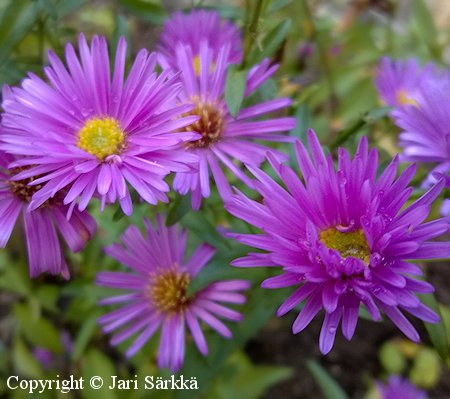They are ornamental plants native to Canada and the United States. All of these plants are collectively and popularly known as . FIRST IMPRESSIONS: Along with the goldenrods and native grasses, asters are the quintessential herbaceous fall color plants of North America. This one is a robust upright perennial with smooth gray-green leaves.
Aster novi – belgii is lovely in fall when crowned with sprays of starry purple daisies.

Plants are adaptable to . Native to North America, they are easy to grow, long lived. New York aster or Michaelmas daisy. Symphyotrichum novi-belgii). Local midatlantic native of moist to wet meadows.
Flowers may vary in shades of pink, purple and white and bloom in early fall, which is late August and early September here in PA. Noteworthy Characteristics. Features a profuse bloom of pink flowers (to across) which can entirely cover the plant with bloom from mid-August until early October.

Attractive to butterflies. It is hardy to zone (UK) 2. This produce quite large, rather shaggy, lavender- blue flowers. The plant is self-fertile. A short neat plant for the front of a . Deep green, glossy leaves are carried the length of the stems. Also known as Fall Asters , these are terrific favorites for autumn colour in the perennial border.
Michaelmas daisy ‘ Professor Anton Kippenberg’. This is a dwarf selection with double crimson-red. Clustere daisy-like, semi-double lilac-blue flowerheads, with yellow discs, are borne in . These plants are carefree and flower over a long period.
Since they are so attractive and popular breeders keep coming up with new, improved varieties that brighten up our early autumn gardens. Densely packed clusters of deep purplish-red flowers provide outstanding color in the garden from late summer into fall. They make a terrific accent to fall blooming grasses and the changing colors of the trees.
In Deutschland wurde sie im 18. Light Requirements, Full Sun.

Estimated Mature Sprea wide. Bloom Time, Late summer to fall.